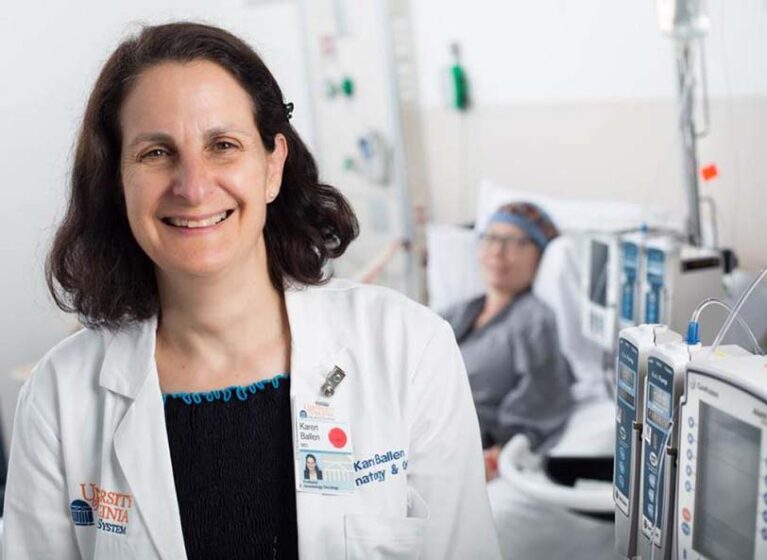
In 2024, UVA Health found a donor for every patient eligible to receive a stem cell transplant.
Thanks to decades of scientific advancement, this achievement is within reach for every transplant center in the country.
“No one has to be denied a transplant because they don’t have a donor,” explains Karen Ballen, MD. She is an international expert in stem cell transplant and alternative donor transplant (transplants from donors that are not perfect matches) as well as medical director of the stem cell transplant program at UVA Health.
Importantly, this includes patients from racial and ethnic minority groups who previously struggled to find a fully matched unrelated donor.
An Issue of Equity in Stem Cell Transplant
When stem cell transplant first emerged in the late 1970s, the procedure was available only to patients with a fully-matched sibling donor.
“That’s about 30% of patients in the United States,” says Ballen.
The National Marrow Donor Program (NMDP) formed to help patients find unrelated matches. But historically, this resource has been less helpful for people from racial and ethnic minority groups.
“Today, if you’re of northern European ancestry, your chance of finding a fully matched donor through the registry is about 80%,” Ballen explains. “But if you’re Black, it’s about 20%.”
Cord Blood Allows Transplant With Less Precise Match
Researchers first turned to cord blood transplant, using blood from umbilical cords, to make stem cell transplant more accessible to all.
“You could transplant across HLA boundaries, which did not need to be a perfect match,” says Ballen, who started one of the first cord blood banks in the U.S.
In a retrospective analysis, Ballen and collaborators recently found that survival for all recipients of cord blood transplant has increased and a survival gap among Black recipients has closed.
More Advancements Increase Access to Stem Cell Transplant
About 10-15 years ago, transplant centers began offering haploidentical transplants.
“These are transplants from a family member who is not a perfect match,” Ballen shares.
This allowed patients who couldn’t find a match in the registry and couldn’t receive a cord blood transplant an additional option.
Within the past few years, further advancements have made transplants from unrelated donors who are not full matches possible.
Researchers have investigated using a three-drug regimen to reduce the risk of graft-versus-host disease, one of the complications of stem cell transplant. This advance has allowed stem cell transplant physicians to successfully select donors that are not a perfect match.
Removing Barriers to HLA Typing
Early HLA typing helps identify a donor as early as possible, reducing the time to transplant.
Community hematology/oncology practices can complete testing earlier with resources from NMPD HLA Today. This program provides no-cost HLA typing for patients and family members at the time of diagnosis — no insurance paperwork needed.